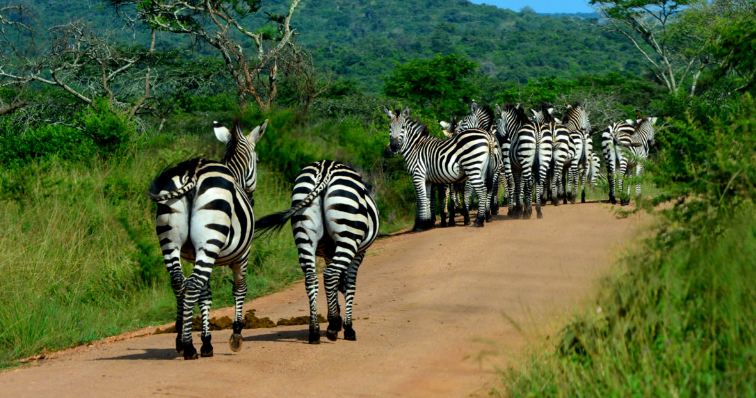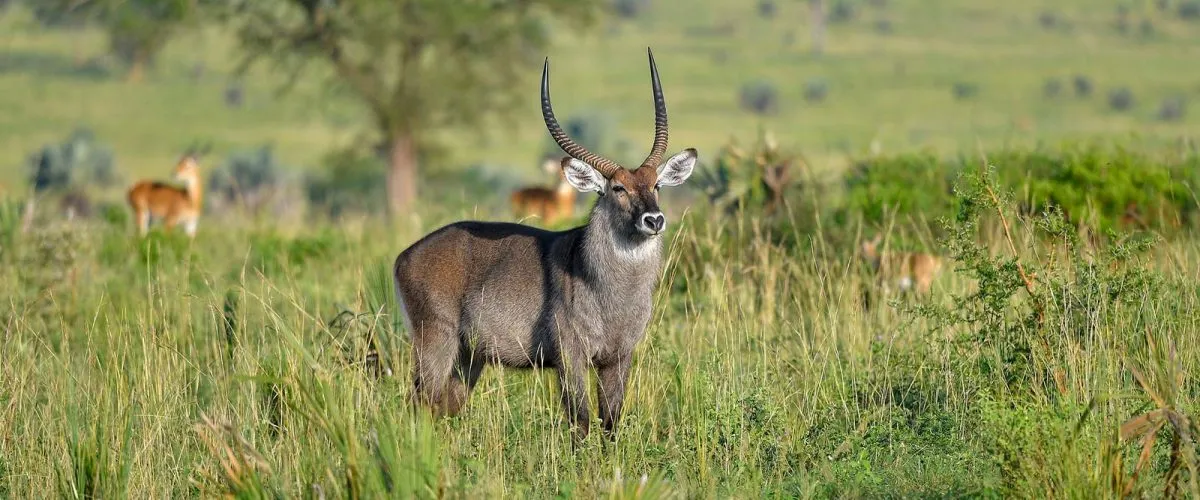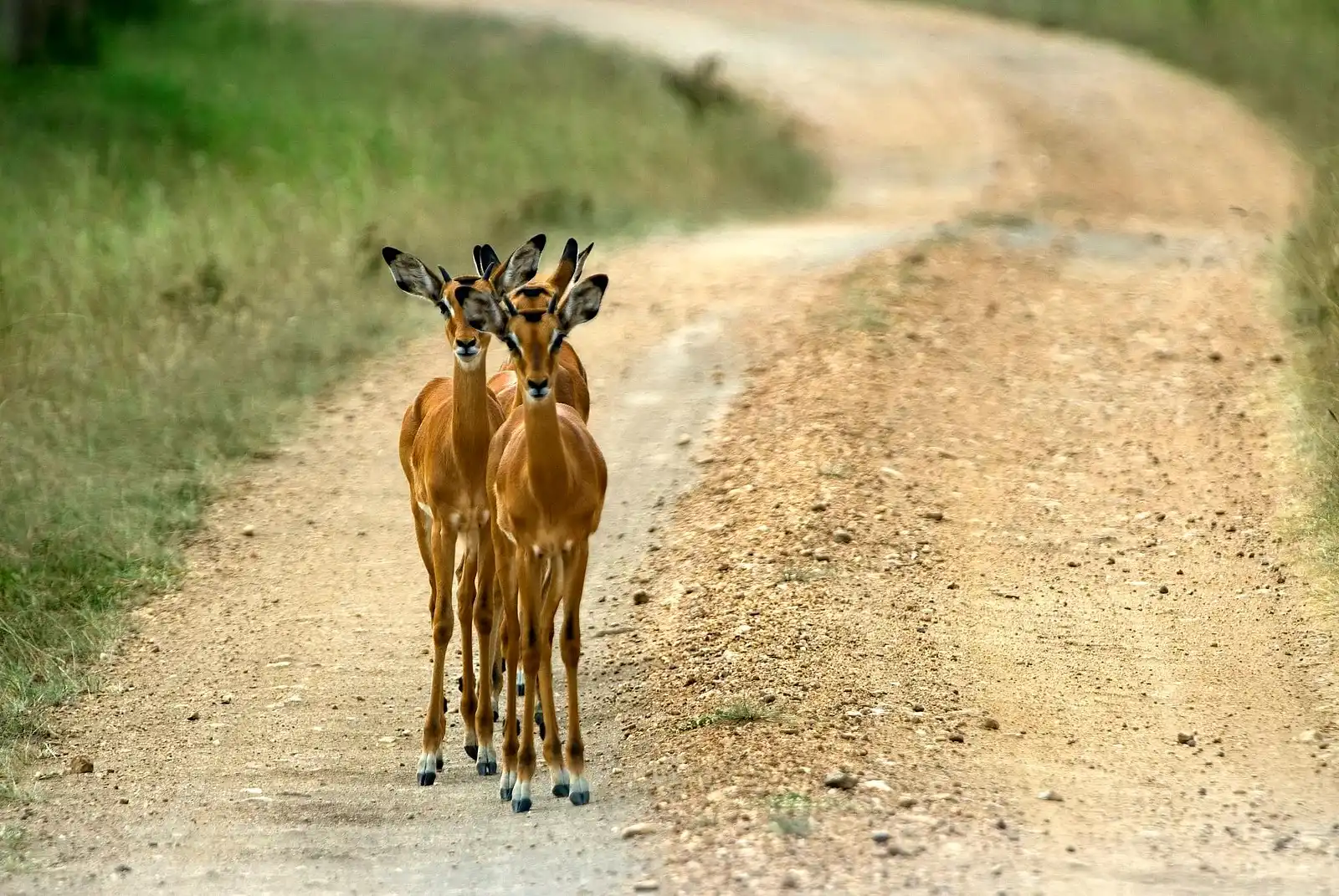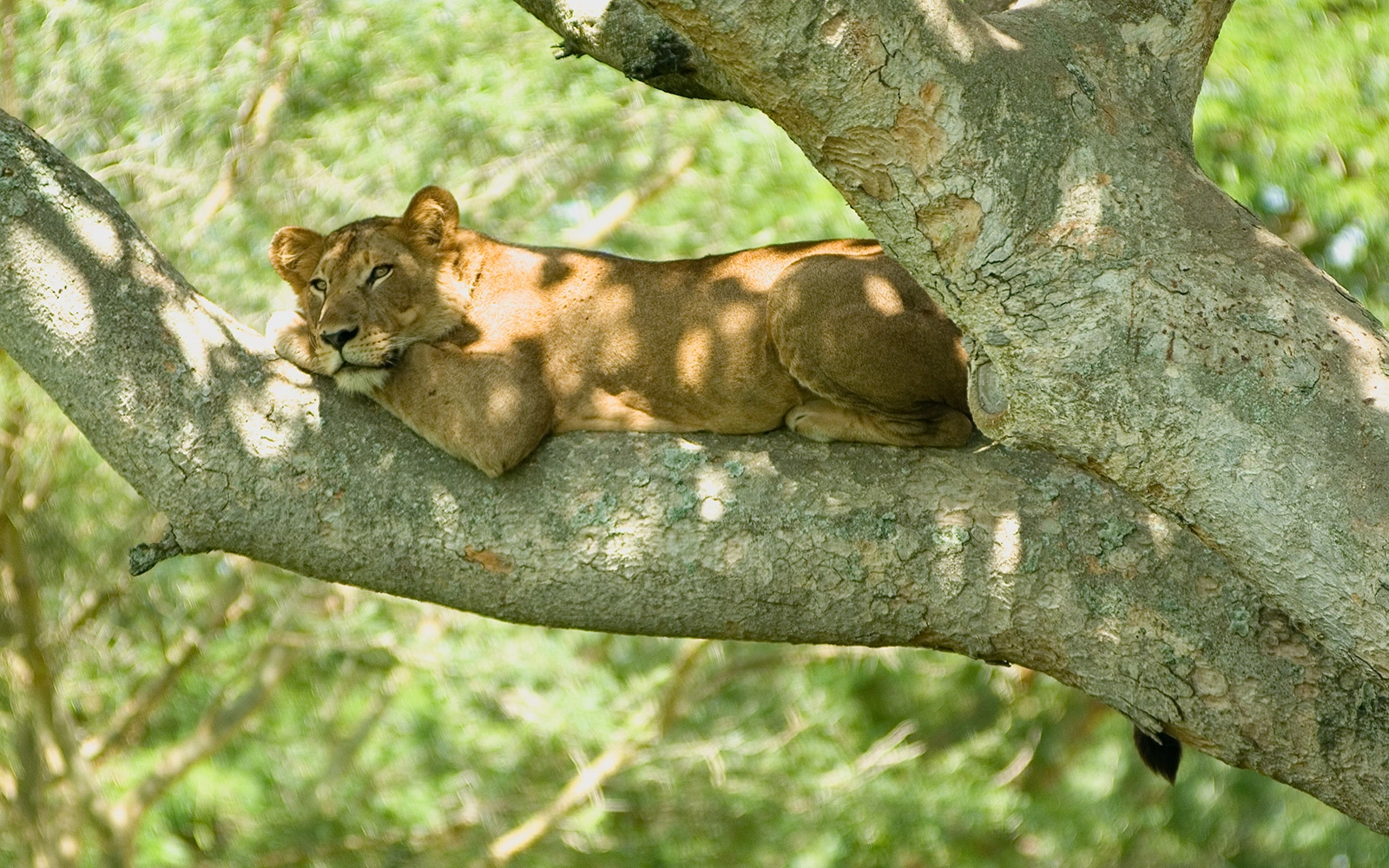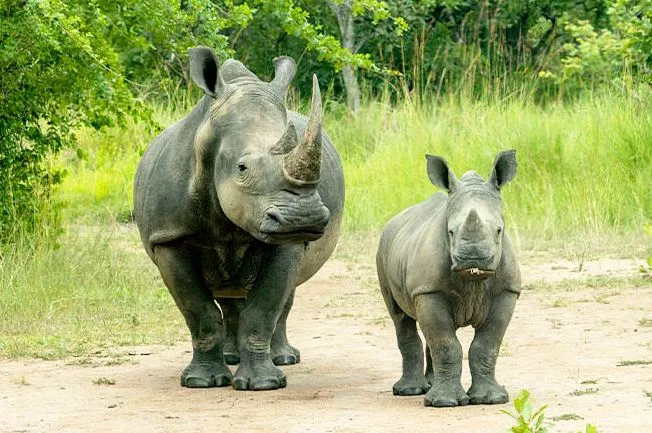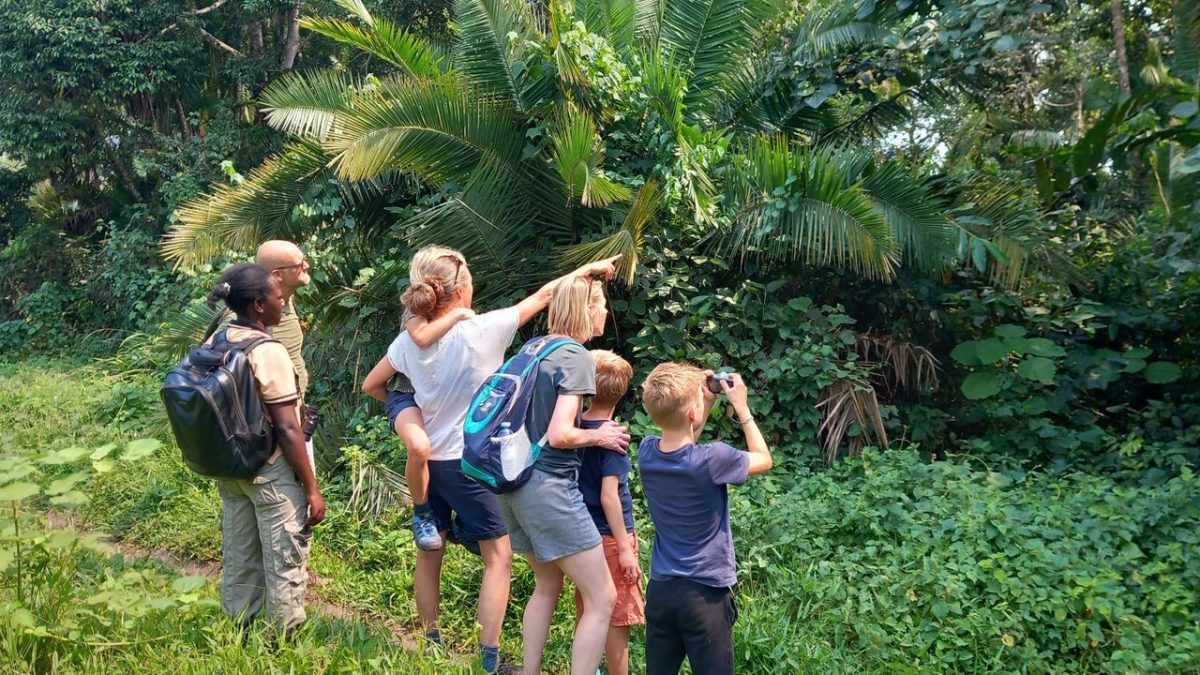Are you a serious bird watcher, wildlife watcher, nature lover or just want to unwind in a serene natural environment – Lake Mburo National Park awaits you.
With a total size of around 260 square kilometers, Lake Mburo is Uganda’s smallest game park, yet it is nonetheless home to a variety of natural wonders.
There is something for everyone, from savanna to lakes, from zebras to leopards, from game walks to game drives. Lake Mburo National Park is also conveniently positioned and accessible from various places around the country.
Lake Mburo National Park is located a 3 hours’ drive from the capital, Kampala. The park can be reached within 6 hours from the gorilla trekking forests of the southwest. It is often a relaxing end to a Uganda safari. Lake Mburo National Park has unique wildlife. This is the only protected area in western Uganda with Impalas, zebra, giraffes, and elands.
What makes Lake Mburo so unique is that this is the only park in Uganda where you can do a walking safari, or you could also do a horse riding safari.
What you should definitely not miss is the boat cruise on Lake Mburo. The slogan of Lake Mburo National Park is “Whispers of the Wild”. Indeed the soughing of wind in the grasses and trees brings peace to the city-worn soul. If you live in Kampala, then Lake Mburo is also a great place for a short break trip or a weekend getaway.
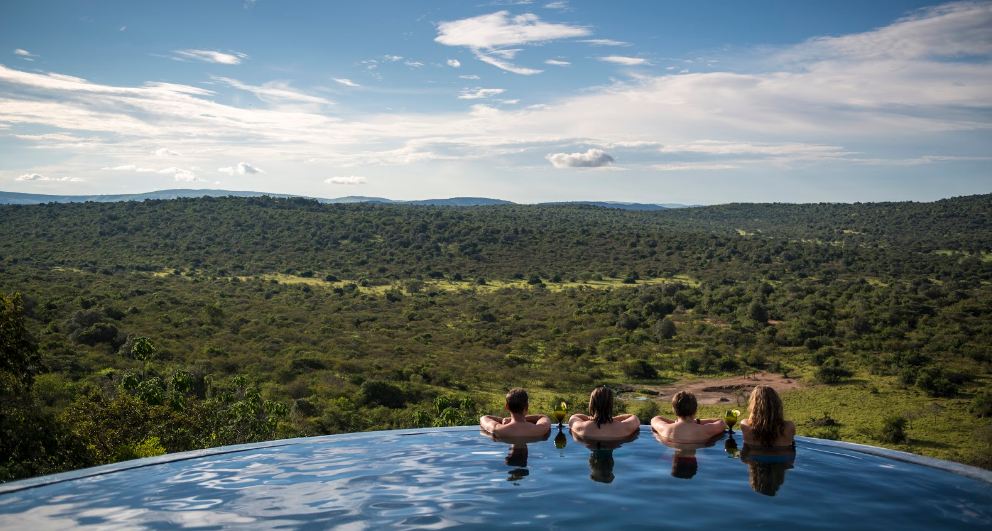
Safaris To Lake Mburo National Park
If you want to visit Lake Mburo National Park, look no further. Our Lake Mburo National Park safari tours range from short wildlife safaris that include only Lake Mburo National Park to multi destination itineraries that include other savannah game parks and the gorilla parks.
Many of our suggested itineraries also take in chimpanzee tracking in Kibale Forest National Park. Click here to see all our pre-packaged Uganda wildlife safaris or simply contact us for a tailor-made itinerary.
The Story Of Lake Mburo National Park
The reason Lake Mburo National Park has remained a sanctuary of wilderness is explained by its history. It was well-known for the culture of pastoralists who roamed its savannah plains and hills as the “Karo Kurungi” (“beautiful land”) before it was designated as a protected area.
The Banyankole Bahima people’s culture has contributed to the preservation of Mburo’s natural beauty.
This is partly because the Bahima People believed that the beauty of their long-horned Ankole cattle depended on preserving the pastoral beauty of Karo Kurungi – their ancestral land.
The graceful long-horned Ankole cattle are suited to survive on little water and sparse foliage and offer meat and very rich milk.
The Bahima people also believed that because they were tasked with taking care of the Ankole, the prosperity of their cattle hinged on the land remaining beautiful, which meant it had to remain unfenced, unfarmed, and uncropped.
This prohibited other Banyankole groups (the Bahinda and Bairu farming class) from turning Karo Karungi into a productive landscape of farms and fences
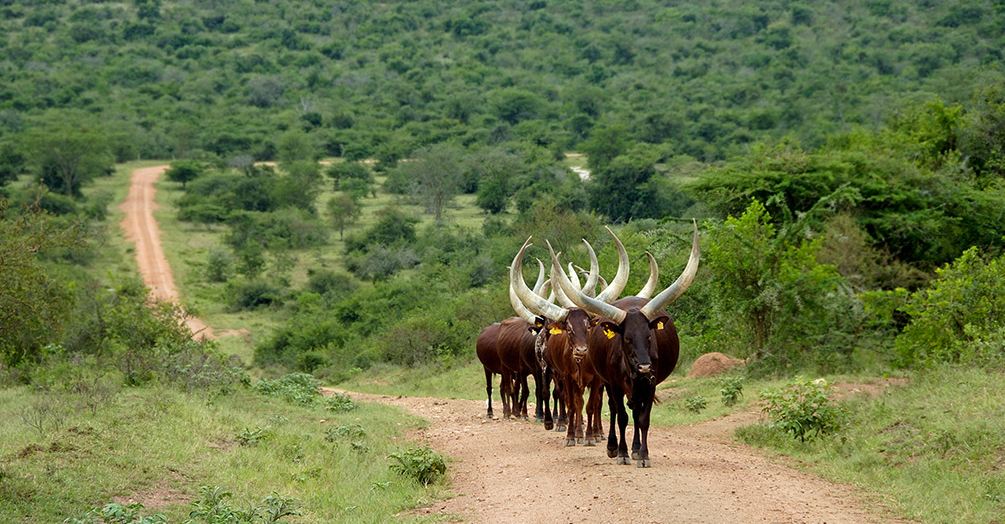
As rangeland grazing in the savannah biome is dictated by the unpredictable vagaries of rains and sun, pastoralists had to meander far and wide with their cattle. Unrestricted by fences, this intermittent grazing helped the grasslands to rest and recover after grazing.
The cattle grazing also prevented the open grasslands from bush encroachment (when acacia tree thickets started to dominate the plains).
In essence, the pastoral nature of the Bahima kept the savannah of today’s Lake Mburo National Park intact. All of this, however, went awry in 1983 when the national park was gazetted by the Obote regime, and the locals were forcibly removed from their land with little consultation and no compensation for the lost grazing land.
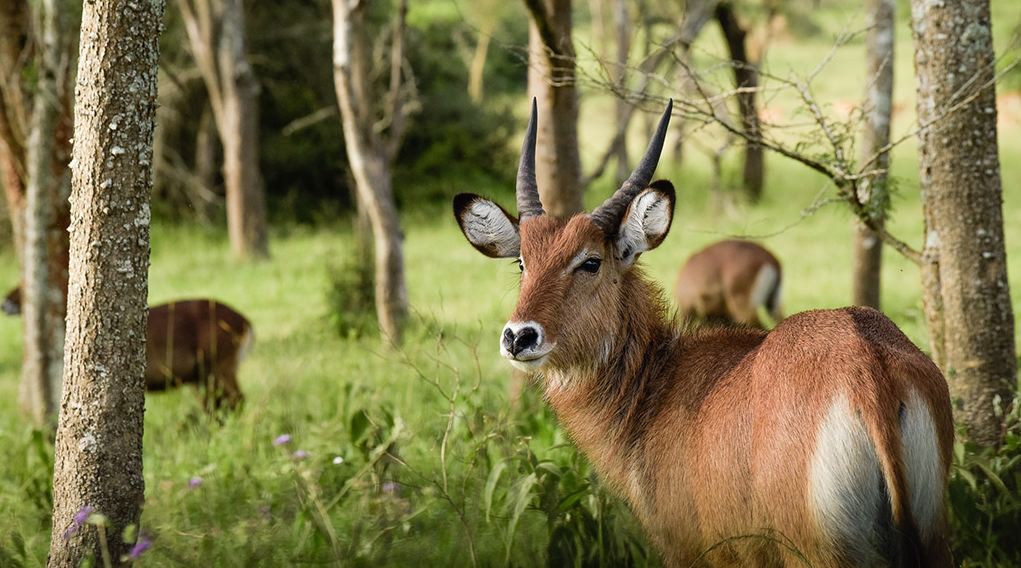
The decision to declare the area a national park was in one part targeted to punish the Banyankole who were believed to be supporting the anti-Obote rebels. In a sense, the Bahima’s connection to their pastoralist identity and “Beautiful Land” was suddenly detached.
When the Obote II regime collapsed in 1985, the former occupants re-claimed their land and chaos ensued; they expelled the park’s staff, destroyed the infrastructure and annihilated wildlife. However, the story does not end there.
After hearing about the Ankole cattle of the Bahima and how the area was intrinsically linked to their culture, the NRM government reopened the park and degazetted a portion of the territory in 1986.
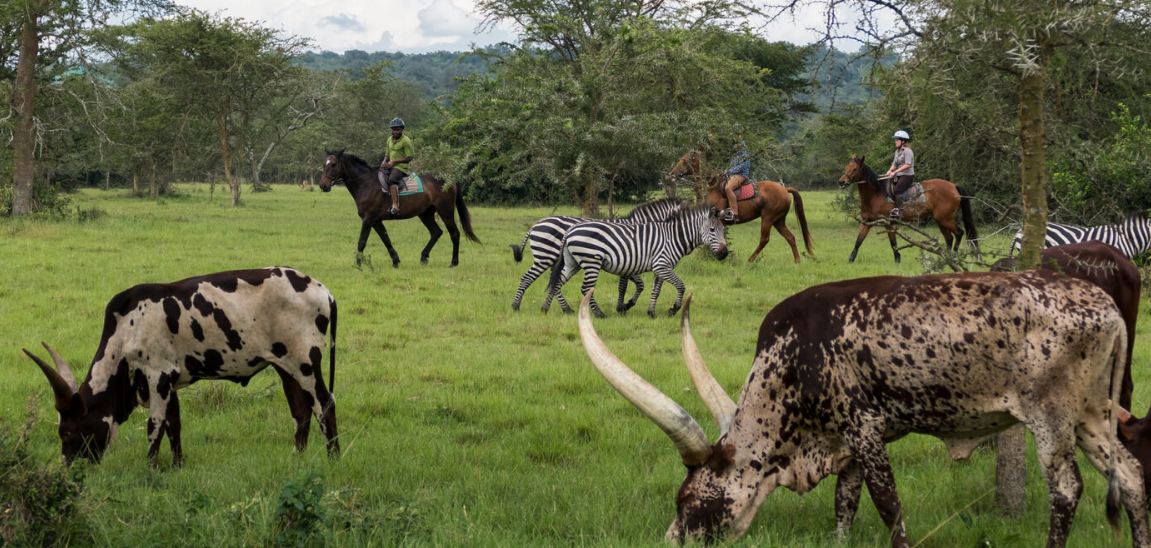
Now, Lake Mburo National Park is unfenced and managed to include the values of the Banyankole People and their culture as well as the protection of wildlife.
As a result, visitors on Uganda safaris here will sometimes see these cattle, stippled with patterns that look like the dapplings of light through the trees, grazing alongside zebra in the park. The park and the people have started a new journey together, which is why Lake Mburo National Park is so special.
It is one of the few places left that reflects Africa’s fenceless, wild, untamed rangelands. It is an oasis amongst the surrounding landscape’s dairy farms and subsistence croplands.
Geography and Geology of Mburo
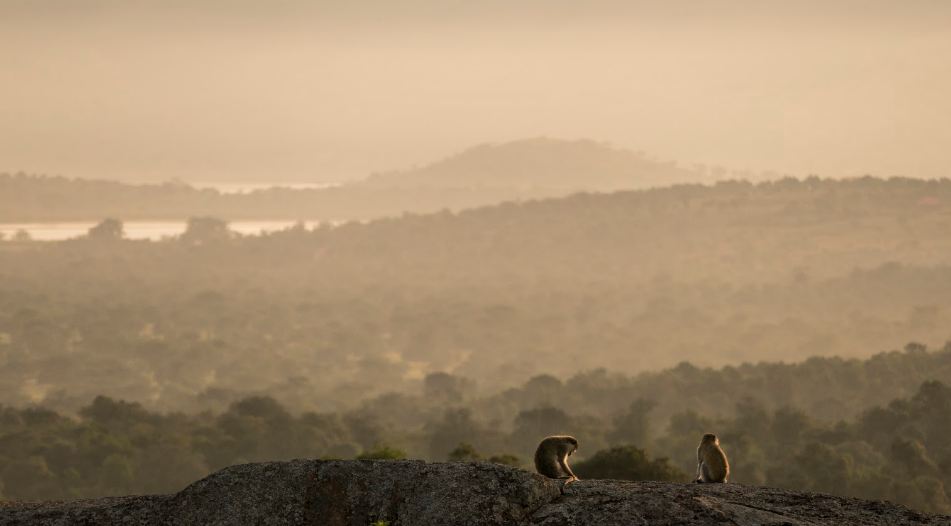
Uganda’s smallest game park is located in the southern Ankole region – close to the town of Mbarara. The park is situated halfway between Bwindi Impenetrable National Park and Entebbe/Kampala.
Apart from the savannah element, the 260km2 park is a treasure trove of other habitats, including hills and shrublands, grasslands, seasonal and permanent swamps, rocky outcrops and thickets. With each habitat comes its cast of inhabitants, from otters to birds.
Lake Mburo National Park is also located in the ‘rain shadow’ between Lake Victoria and the Rwenzori Mountains. The game park has a relatively low annual rainfall of 800mm, similar to Kidepo National Park.
Despite this, 20% (50 square kilometers) of the park is made up of wetland habitats, most notably 5 lakes, the largest of which being the 13km² Lake Mburo. The underlying Pre-Cambrian bedrock dates back over 500 million years and supports sandy, well-drained, soils.
Animals in Lake Mburo National Park
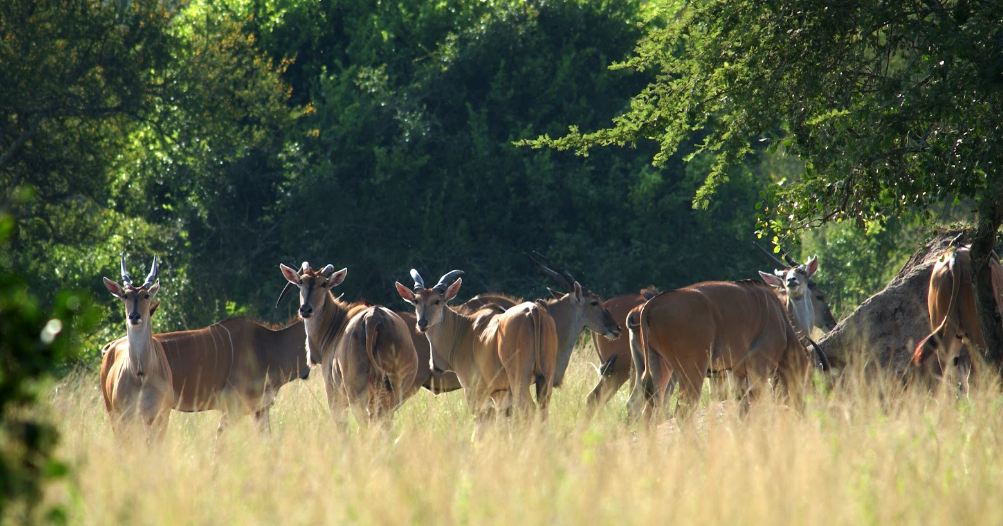
Over 68 species of mammals live in Lake Mburo National Park. The park is the only one in Uganda wildlife safari with impalas, klipspringers and the gigantic Eland antelopes.
The beautiful Plains Zebras which are found in only one other Uganda park (remote Kidepo Valley National Park) live here in large number, estimated at 5,000 large. Lake Mburo also possibly contains the highest concentration of leopards found anywhere in Uganda.
The mighty African Buffaloes are also easy to see in the open savanna and near water sources. The lakes support about 300 hippos and a heap of Nile crocodiles. Three other species frolic in the lakes’ waters: Congo clawless, Cape clawless, and the spotted-neck otter.
A group of Rothschild’s Giraffes was brought into the park in 2015 thus improving on the diversity of wildlife in the park.
The park is also home to Vervet monkey, Olive baboon, Bush baby, Genet and many types of mongoose. Other animals that inhabit the park include Defassa waterbuck, bushbuck, warthog, topi, oribi, Bohor reedbuck, Statunga, spotted hyena, genet, and bush pig.
Birds in Lake Mburo National Park
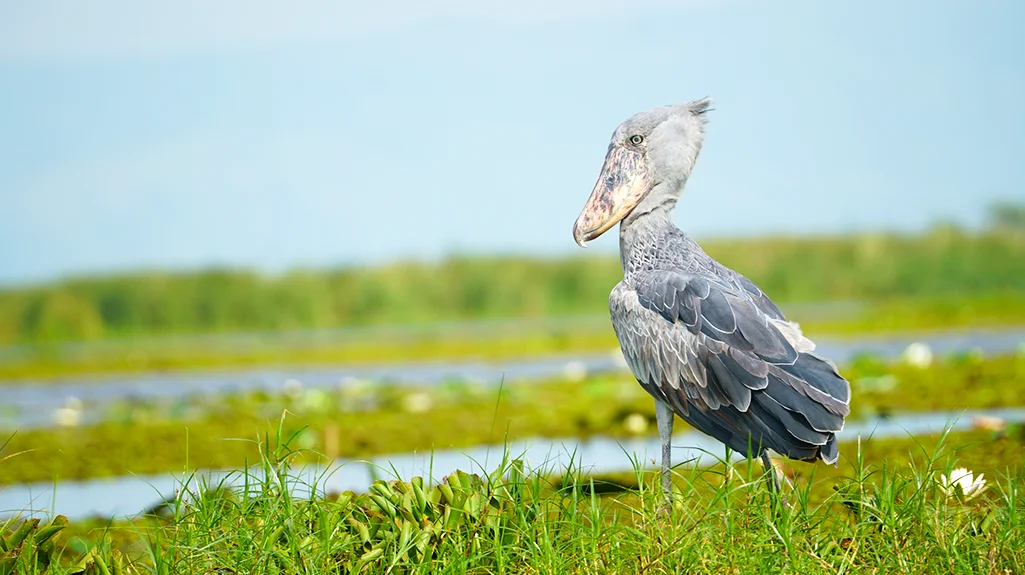
Uganda is possibly the best birding watching destination in Africa and Lake Mburo National Park’ is one of the top places for birding tours in Uganda.
There is over 300 bird species recorded in the park, many of which are associated with the acacia and water habitats in the park.
Lake Mburo has given many a birders their first exciting glimpse of the elusive African Finfoot with its bright red, big feet or the sighting of the Brown-chested lapwing that arrives in November to hang out on the zebra trails.
The park’s woodlands support the near-threatened Red-faced barbet.
There is also an opportunity to watch the pre-historic looking shoebill stork, standing still at the water’s edge. Lake Mburo National Park has some of Uganda’s highest concentration of raptors (35 species), including the African Fish Eagle, Lappet-faced Vulture, Brown Snake Eagle, Bateleur, and African harrier hawk.
Other bird species with names that roll off the tongue include the:
- Green-winged pytilia
- Papyrus yellow warbler
- African paradise flycatcher
- Black-headed Gonolek
- Rufus-bellied heron
- Ross’s Turaco
- Narina trogon
- Lilac-breasted Roller
- Green Wood Hoopoe
- Common Scimitarbill
- Coqui Francolin
- White-backed heron
Activities in Lake Mburo National Park
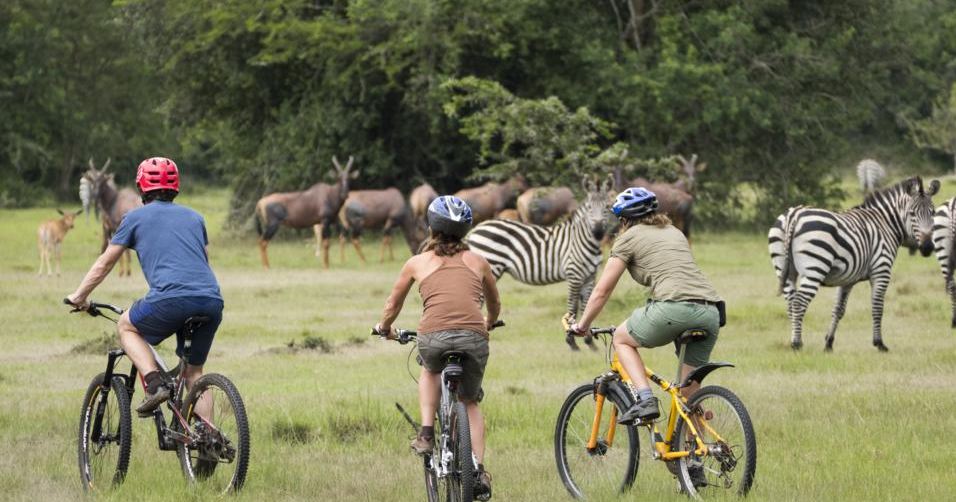
Lake Mburo National Park may be Uganda’s smallest game park, but it offers an array of guided activities – enough to whet the tastebuds of any explorer. See an overview below:
1. Walking Safari
Put on your comfortable walking shoes, backpack and bring plenty of water!
During the walking safari in Lake Mburo National Park, you will walk in search of wild animals in the park under the guidance of an experienced ranger. Giraffes, Zebras, buffalos, hyenas and beautiful antelope species come to greet you up close. This is a unique experience that is only possible at a limited number of locations in Uganda.
2. Cycling Tours
Cycling tours in Lake Mburo National Park offers a unique opportunity to move amongst the wild animals and enjoying the consistently beautiful view.
It is perfect for the sporty traveler! The cycling tour is a challenging due to the height differences in Lake Mburo National Park.
Do you have doubts about your physical condition in combination with this excursion? The travel specialists will be happy to offer you with further information in a personal conversation.
3. Horseback Safari
The horseback safari is a thrilling adventure for both beginners and advanced riders.
There is no better way to get close to beautiful wildlife of Lake Mburo National Park than with another animal, which is why you can get really close to the animals during the horse riding safari. Please note that for this excursion a maximum weight of 90 kilogram – applies per person. The excursion can only be booked in advance or on site through your guide.
4. Day Game Drive
There are several beautiful drives to tour in the park either heading out yourself with a map, with a guide. Research Track is one of our favorite drives where you are likely to see buffalo wallowing in the mud, Zebra, Impala, Topi, Bush buck, Reed buck, Oribi and Warthog.
For spectacular views, park at the bottom of Kazuma look-out and walk up to the top; from here the view is stunning and you can see 5 lakes including Lake Mburo. For some 4 x 4 driving during the rainy season Eland track is the most challenging.
5. Night Game Drive
The night safari in Lake Mburo National Park starts when it starts to get dark, before your dinner starts. A professional ranger, who lives in the park, will accompany you.
He or she will look for night-dwelling creatures with a large lamp. Of course, help during spotting is always welcome.
A night safari is special because of the chance to see animals that are not or hardly active during the day, such as leopards, genets, bush babies, spotted hyenas and porcupines.
6. Boat Cruise On Lake Mburo
Lake Mburo National Park also take to the water in Lake Mburo on a 2-hour boat cruise, which allows the chance to watch hippos and crocodiles, hear the iconic call of the African fish eagle and seek out exciting wetland birds. Private cruises can also be organized.
7. Bird Watching
Birding in Lake Mburo National Park can be done on game drive, boat cruise or nature walk.
8. Cultural Visits
You can take a walk or a bike ride over to a traditional Bahima Banyankole homestead to learn about their cultural traditions and their way of life.
Activities include learning about the Ankole long- horned cattle with a chance to try your hand at milking, understand the ghee making process, taste milk and much more.
This adventure includes a nature walk or bike ride across grazing land, where wildlife and livestock mingle together, to the homestead and back again. Alternatively you can ride a mountain bike to a nearby fishing village and see how the people live.
Where To Stay in Lake Mburo National Park
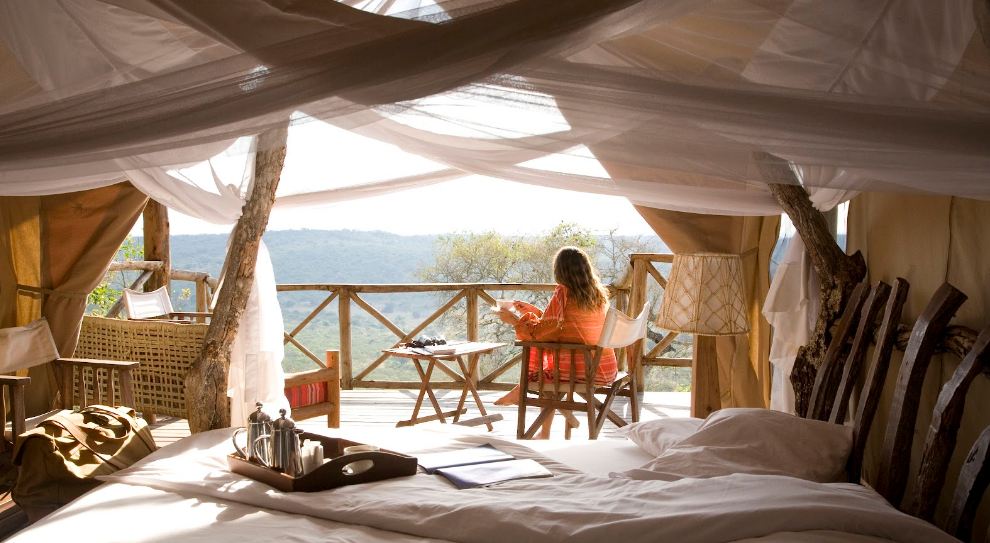
Keen on touring Lake Mburo National Park for your next safari? The park offers a variety of accommodation options available inside and outside the national park boundaries, from budget, mid-range to luxury options. The best places to stay include:
- Mihingo Lodge – Luxury
- Kigambira Safari Lodge – Semi luxury
- Rwakobo Rock – Midrange
- Eagles Nest Mburo – Budget
- Leopard Rest Camp – Budget
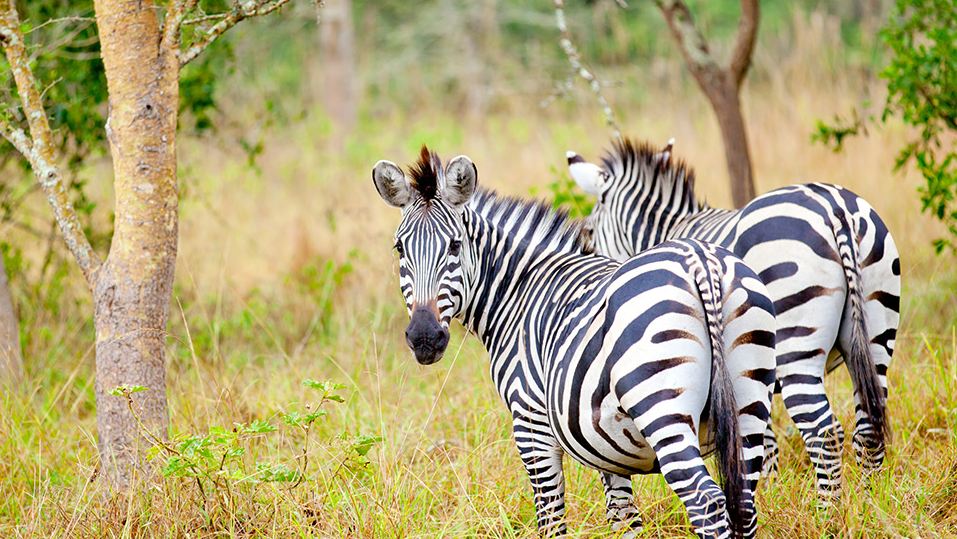
FAQs About Lake Mburo National Park
1. When To Visit Lake Mburo National Park?
Lake Mburo NP’s annual rainfall and temperatures average 800 mm and 28°C, respectively. The park is open year round. But the best times to visit Lake Mburo National Park are during its two dry seasons of:
- December to February
- June to August.
2. How much is Lake Mburo National Park entrance fee?
- Foreign Non-Resident (Adult): US Dollars 40
- Foreign Non-Resident (Children): US Dollars 20
- Foreign Resident (Adult): US Dollars 30
- Foreign Resident (Children): US Dollars 10
- East African Citizen (Adult): UGX 20,000
- East African Citizen (Children): UGX 5,000
- Ugandan Pupils and/ or Students (Groups): UGX 3000
- Tertiary Institutions/ Universities: UGX 5000
3. How To Get To Lake Mburo National Park?
Lake Mburo can easily be accessed via a 3-hour drive from Kampala, though there are also chartered flights available from Entebbe International Airport to the airstrip in Mbarara, a 90-minute drive from the park.
4. How many lions are in Lake Mburo National Park?
There is no lions in Lake Mburo National Park. There is also no elpehanats in the park and that is why is a perfect place for walking safaris. Lions in Uganda can be encountered in Queen Elizabeth National Park, Kidepo Valley National Park and Murchison Falls National Park.
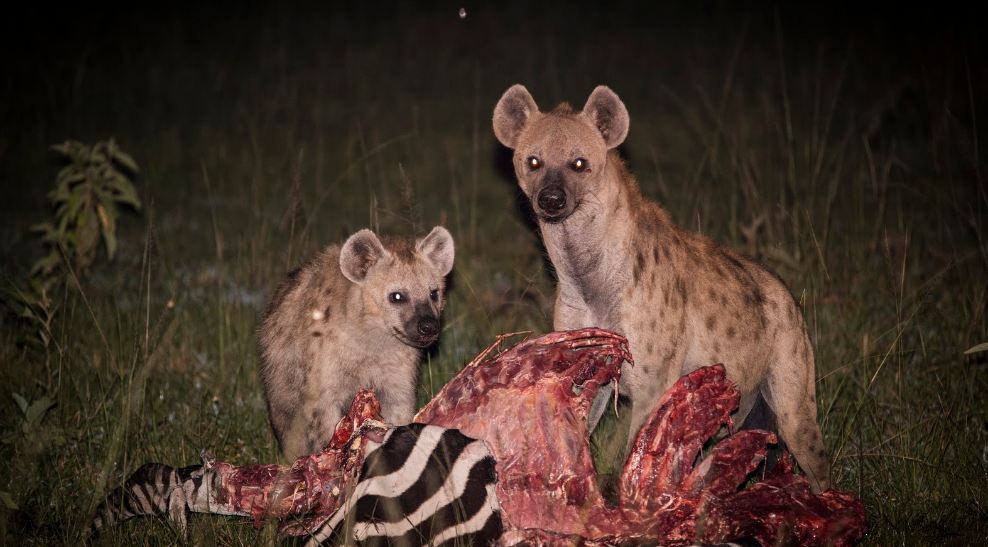
Ready To Start Planning Your Lake Mburo National Park Safari
We hope you have found all information needed to decide that the Lake Mburo National Park in Uganda is the perfect place for your next safari adventure. Still have questions? Or maybe you would like some more specific information about the different lodges? Please contact us and we will get back to you soon!

